
Home » The Ultimate Guide to Condenser Microphones for Home Recording Studios
The Best Condenser Microphones for Home Recording Studios. In one of our previous posts, we discussed how to set up your own home studio and the importance of choosing well each of its components. One of the most essential ones is the microphone, key for every home studio and voiceover recording.
Today, we would like to delve a little bit deeper in this basic tool for the voiceover work and offer you some advice to help you choose the mic that better fits your needs according to the type of voiceover you want to do.
The first thing that has to be considered is that, if we’re going to do professional voiceovers, we will need a high-quality mic. Thus, we recommend you that you go for a condenser mics; they’re the best to capture your voice without distortion, and the sound your get is sharper and warmer.
Related article: How to Set up your Home Studio. 9 Essentials you Need.
And, what’s a condenser mic all about? They’re microphones made of two metal plates that are connected to a battery. The front plate is the diaphragm, or membrane, and as the sound reaches it, it is pushed towards the back plate to generate electric current. Thus, as the plates move, there is a change in electrical capacity that releases part of the charge in the electrostatic field. As a result of this process, some current is generated that translates into audio signal. Thus, the most theoretical part.
To choose the microphone that best suits your needs, it’s best to test them in different positions and angles to discover and know which one you feel most comfortable with. The large diaphragm condenser microphones market is very wide and there are many options, but here are some of the ones that we believe are the most interesting.
Neumann U87
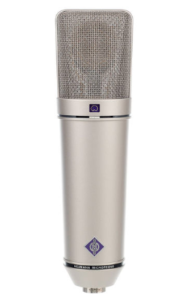
Neumann is one of the best microphone brands on the market. Many experts agree that their U87 is the king of studio microphones for voice. Its high sensitivity guarantees a very detailed sound. The only drawback is the price: this is a very expensive mic, but if you can afford it, you won’t regret the buy.
Shure KSM42 SG

It’s one of the most expensive microphones, it certainly provides a great quality; it’s high-end, and if you can afford, it’s certainly worth it. The clarity it gives is practically crystalline, voices sound great through it.
Warm Audio WA-87

This microphone, as its name indicates, provides a delicious warmth to any voice recording. Ideal for voiceovers, interviews or even singing, it’s a great choice for beginners and experienced voice talents – professional quality at a reasonable price range.
AKG C214
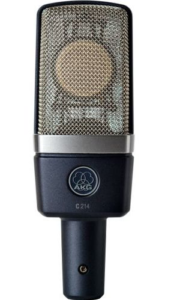
It’s one of the best microphones on this list, and it’s not only used to record vocals, but also to record string instruments and even percussion. Its maximum input sound level is variable, thanks to a switch that allows you to record at a much higher level than we are used to in most microphones.
Audio-Technica AT2035
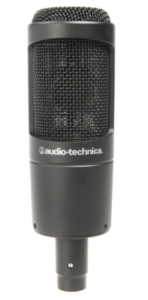
It’s one of the best options for voiceover beginners. Its frequency response is flat, which provides a very particular and pleasant subtle color in the recordings.
“For voiceover beginners, the Audio-Technica AT2035 condenser microphone is one of the best options.“
Rode NT1A
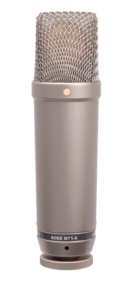
A studio condenser microphone, with a large diaphragm, and a medium-low price. This microphone offers us a very clean sound, great for recording vocals, especially tenors, and for female voices. It also offers dynamic, bright sound, plus, cancellation works great at a certain distance.
Sennheiser MK4
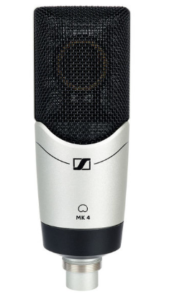
The price is a little higher than the previous one, but it’s still affordable. The signal-to-noise ratio of this microphone is very good, and it guarantees perfectly clear recordings. In addition, its ability to capture sound is impressive.
Blue Microphones Spark
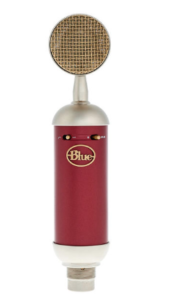
It’s quality is impressive, and it’s perfect to capture even the smallest detail in your recordings. It’s an incredible option to record vocals and any string instrument, and its price is very affordable.
MXL 770
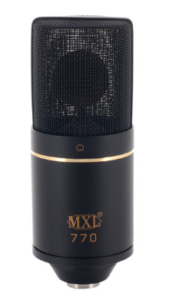
It’s not a very renowned brand right now, but it achieves a very professional quality at a very economical price. In addition, its design is very striking and attractive due to its black and gold colours, providing your studio with a professional look.
USB microphones

It’s another possible option when recording voices, especially when you need to move and record in different studios. One of its advantages is its flexibility, and that, with no need of being connected to an audio interface, they are easily transportable.
Nowadays they’re highly popular in beginners’ home studies, and although it’s not the most professional option, they’re an interesting complement if you already have another non-USB condenser microphone.
Finally, remember that condenser microphones need power to operate, and it is normally 48 V, so your audio interface must have this capability. Don’t forget the mic stand for comfort, an anti-shock mount that’s compatible with your device, and an anti-pop filter.
Related article: Top 10 Tips to Become a Voiceover Artist.


